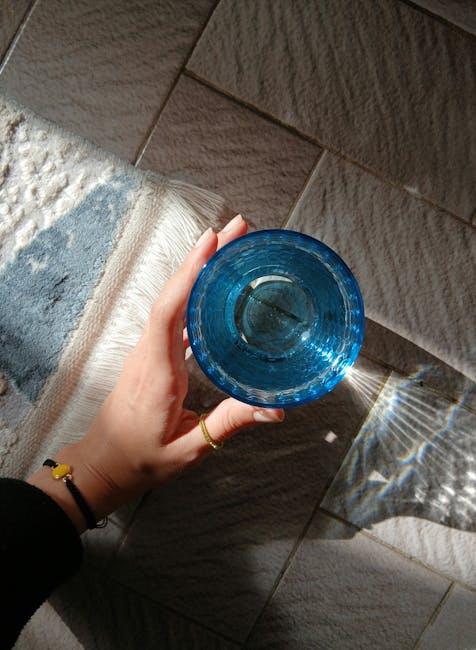When it comes to transforming your living space into a vibrant sanctuary, smart lighting systems have emerged as the game-changers in home automation. Among the leading contenders in this luminous landscape are Philips Hue and LIFX, two brands that offer innovative solutions to brighten your world, each with its unique features and benefits. But with choices aplenty—from customizable color palettes and remote accessibility to smart home integration—how do you know which system aligns best with your needs? In this article,we will illuminate the strengths and weaknesses of Philips hue and LIFX,guiding you through a thoughtful comparison to help you make an informed decision in your quest for the perfect smart lighting solution. Whether you’re a lighting enthusiast or a tech novice, join us as we explore the nuances of these two titans, and discover which smart lighting system is right for you.
Choosing Your smart Lighting Style: Aesthetics vs. Functionality
When it comes to smart lighting, both Philips Hue and LIFX offer unique styles that cater to different aesthetic preferences. Philips Hue is renowned for its sleek,modern designs that seamlessly integrate into various home decor styles. the warm and cool lighting options can enhance the ambiance of any room, creating a cozy environment or a vibrant party atmosphere. On the other hand, LIFX is all about bold colors and intensity, allowing users to make a statement with their lighting.With a wider range of hues available,LIFX bulbs can turn a simple living room into a dazzling display of color that captures attention and sparks creativity.
While aesthetics play a critically important role, functionality is equally important when choosing a smart lighting system. Philips Hue excels in interoperability with a range of smart home ecosystems,making it easy to control your lighting through various devices. It also offers features like geofencing and scheduling, providing practical solutions for everyday living. Conversely, LIFX shines in its ease of use, as it does not require a hub for operation. Its built-in Wi-Fi connectivity allows for direct control through a smartphone app, offering convenience and adaptability without the clutter of additional devices. Ultimately, the choice between aesthetics and functionality may come down to personal preference, but understanding the strengths of each system can help you make an informed decision.

Brightness and Color Quality: Illuminating the Differences
When it comes to brightness and color quality, both Philips Hue and LIFX offer extraordinary options, yet their approaches yield distinct results. Philips Hue lights are known for their versatility, providing users with a broad range of brightness levels. From subtle evening illumination to vibrant party lighting, the Hue system can adapt to any environment. Moreover, Philips Hue typically reaches a maximum brightness of around 800 lumens, which is sufficient for most room settings. Their impressive color saturation creates a warm ambiance, making them ideal for both intimate settings and larger gatherings.
Conversely, LIFX lights shine luminous with a maximum output of up to 1600 lumens, appealing to those who prioritize lighting intensity. This brand excels in color rendering, showcasing a wider range of possible hues, resulting in an almost lifelike display. LIFX lamps can produce vibrant shades that pop against any interior design, perfect for capturing attention in bold style. Users often report that the clarity and richness of colors in LIFX products feel more vivid, creating an immersive environment that elevates mood and enhances experiences.

Integration and Compatibility: finding Your Perfect Match
When choosing between Philips Hue and LIFX, it’s essential to consider how well they integrate with your existing smart home ecosystem.Philips Hue is renowned for its compatibility with platforms like Amazon Alexa, Google Assistant, and Apple HomeKit, providing a seamless experience for users already invested in these systems. The Hue Bridge acts as a central hub, allowing you to connect multiple lights and accessories, making it an ideal choice for those looking to develop a thorough smart lighting setup. On the other hand, LIFX stands out with its direct Wi-Fi connectivity, eliminating the need for a hub and making integration straightforward.LIFX lights can easily be controlled through various voice assistants and smart home apps, appealing to users who prefer a hubless approach.
In addition to voice assistant compatibility, it’s worth noting the device ecosystems each brand supports. For Philips Hue, smart integrations can include:
- Apple HomeKit for Apple users
- IFTTT for custom automation
- Philips Hue Labs for experimental features
LIFX, while simpler, allows a different suite of integrations such as:
- Google Assistant for hands-free control
- Amazon Alexa for smart home interactions
- Stringify for more complex automations
This level of integration not only enhances usability but also complements the unique needs of different users, allowing you to find the perfect match for your smart lighting aspirations.

Cost Considerations: Evaluating value for Your Smart Home
When deciding between Philips Hue and LIFX, it’s essential to weigh the cost of both initial investments and ongoing expenses. Philips Hue’s starter kits typically include a few bulbs and the required bridge for connectivity, making it a slightly higher initial cost. Though, the ongoing costs can be relatively low as the bulbs are designed for longevity and energy efficiency. In contrast, LIFX bulbs operate on Wi-Fi, eliminating the need for a hub, which may appeal to those looking to minimize upfront spending.
additionally,consider the overall value presented by each system. While LIFX bulbs often have a lower purchase price, they can require more frequent replacements if used heavily or in demanding environments.Key factors to evaluate include:
- Initial Costs: Price of starter kits vs.individual bulbs
- Energy Efficiency: Projected savings on electricity bills
- lifespan: Durability of the bulbs under normal usage
- Compatibility: Integration with existing smart home ecosystems
| Aspect | Philips Hue | LIFX |
|---|---|---|
| Starter Kit Cost | Higher | Lower |
| Maintaining Cost | Lower | Higher |
| Hub Requirement | Yes | No |
| Brightness Options | Wide Range | Very High |
To Conclude
In the ever-evolving world of smart home technology, choosing the right smart lighting system can substantially enhance your living environment. Philips Hue and LIFX each bring unique strengths to the table, from philips’ robust ecosystem and user-pleasant features to LIFX’s vibrant colors and standalone capabilities. Ultimately, the choice between them hinges on your specific needs and how you envision your lighting experience.
As you decide between these two popular contenders, consider factors like compatibility with existing devices, desired features, and your personal style preferences. Whether you crave the gentle glow of adjustable white light or the bold brilliance of a rainbow of colors, both Philips Hue and LIFX have the potential to transform your home into a beautifully lit sanctuary.
No matter which option you choose, rest assured that you are stepping into a world that blends functionality with artistry—where every glance at your illumination can spark inspiration and comfort. Embrace the future of lighting, and let your creativity shine brightly!





